Other

“A Field-Programmable Gate Array (FPGA) can implement arbitrary digital logic, anything from a microprocessor to a video generator or crypto miner. An FPGA consists of many logic blocks, each typically consisting of a flip flop and a logic function, along …
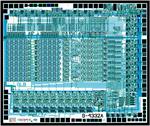
“The Nanoprocessor is a mostly-forgotten processor developed by Hewlett-Packard in 1974 as a microcontroller for their products. Strangely, this processor couldn’t even add or subtract, probably why it was called a nanoprocessor and not a microprocessor. Despite this limitation …

“The Intel 8086 processor was introduced in 1978, setting the course of modern computing. While the x86 processor family has supported 64-bit processing for decades, the original 8086 was a 16-bit processor. As such, it has a 16-bit arithmetic logic …
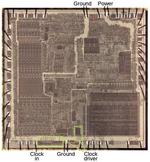
“One under-appreciated characteristic of early microprocessors is the difficulty of distributing power inside the integrated circuit. While a modern processor might have 15 layers of metal wiring, chips from the 1970s such as the 8086 had just a single layer …
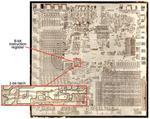
“The Intel 8086 microprocessor is one of the most influential chips ever created; it led to the x86 architecture that dominates desktop and server computing today. But it is still simple enough that its circuitry can be studied under the …
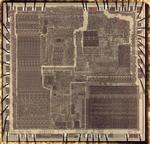
“Introduced in 1978, the revolutionary Intel 8086 microprocessor led to the x86 processors used in most desktop and server computing today. This chip is built from digital circuits, as you would expect. However, it also has analog circuits: charge pumps …
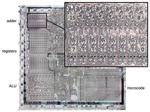
“The Intel 8086 processor contains many interesting components that can be understood through reverse engineering. In this article, I’ll discuss the adder that is used for address calculations. The photo below shows the tiny silicon die of the 8086 …
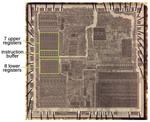
“The Intel 8086 microprocessor is one of the most influential chips ever created; it led to the x86 architecture that dominates desktop and server computing today. I’ve been reverse-engineering the 8086 from die photos, and in this post I …
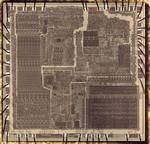
“The Intel 8086 microprocessor was introduced 42 years ago this month,1 so I made some high-res die photos of the chip to celebrate. The 8086 is one of the most influential chips ever created; it started the x86 architecture …
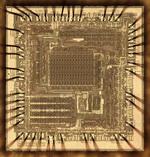
“You’re probably familiar with modern processors made by Advanced Micro Devices. But AMD’s processors go back to 1975, when AMD introduced the Am2901. This chip was a type of processor called a bit-slice processor: each chip processed just …
